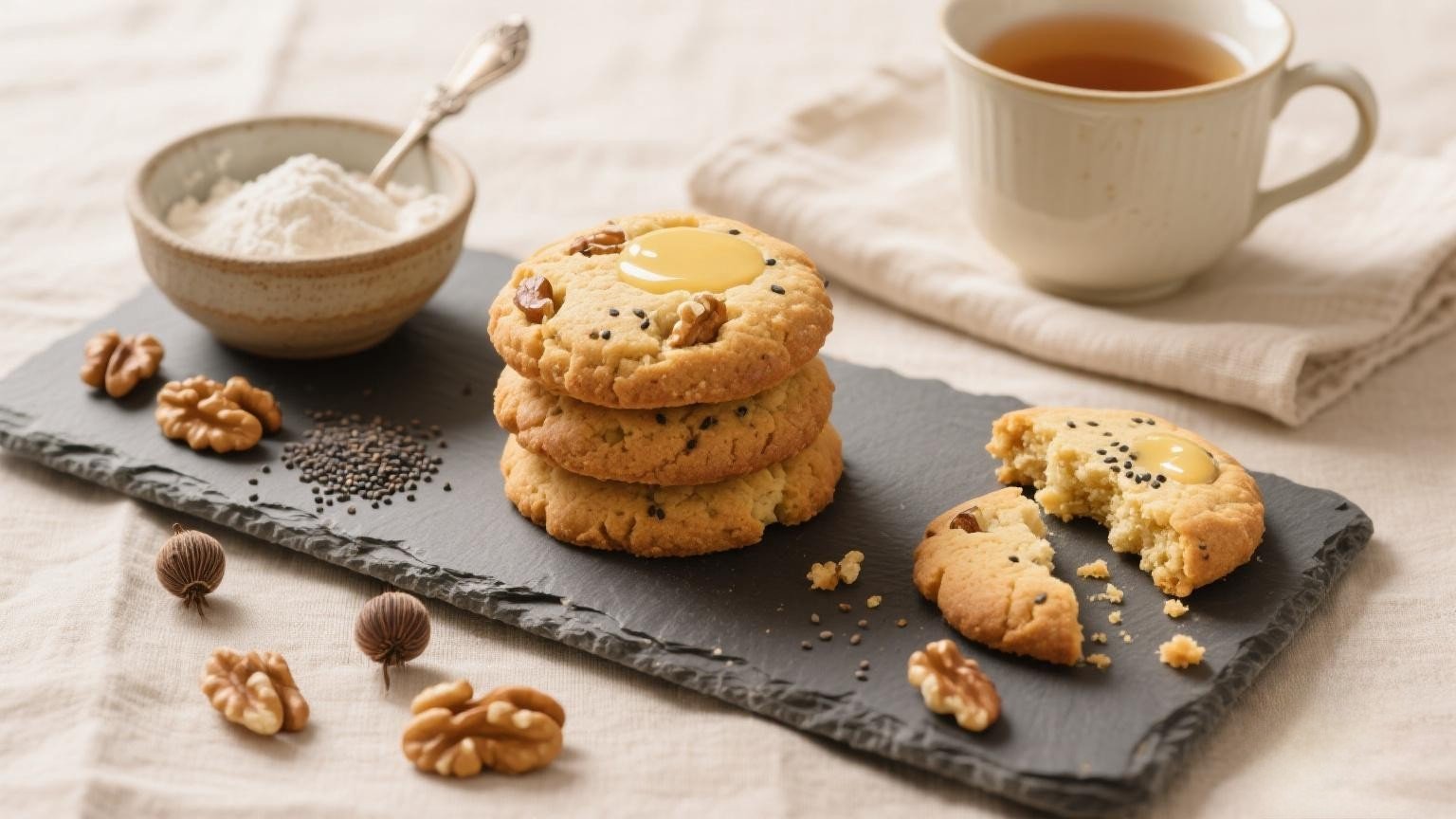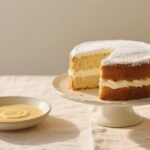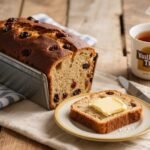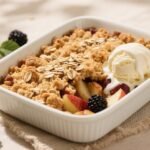There is a certain magic in the simple pleasure of a homemade biscuit. It speaks of comfort, tradition, and the joy of baking. When that recipe comes from Dame Mary Berry, the nation’s most trusted baker and author of over 70 cookbooks, you know it will be something special. These Walnut and Poppy Seed Biscuits are a perfect example of her genius: elegant in their simplicity, yet delivering a delightful crunch and complex flavour that makes them utterly moreish. They are the ideal companion to a mid-morning coffee or an afternoon cup of tea.
This guide will not only walk you through Mary’s classic recipe but also explore its history, offer tips for perfect results every time, and provide a delicious vegan adaptation.
Mary Berry’s Enduring Legacy: Why We Trust Her Recipes
Mary Berry is not just a baker; she is a British institution. Cordon Bleu trained in Paris, her career began as a magazine cookery editor before she published her first book in 1966. For over four decades, she has taught the nation to cook with confidence and flair. As the much-loved judge on the BBC’s The Great British Bake Off, she won hearts with her fair, kind, and expert critiques.
Her accolades are a testament to her influence: the Guild of Food Writers’ Lifetime Achievement Award in 2009 and a CBE in the Queen’s 2012 Birthday Honours list. Mary’s philosophy is rooted in using quality ingredients, achieving perfect texture, and creating foolproof recipes that work in any home kitchen. This recipe embodies all those principles.
A Brief History of the Biscuit: From Hardtack to Afternoon Tea
The word “biscuit” comes from the Latin bis coctus, meaning “twice-baked.” This method was originally used to create hard, dry, and long-lasting sustenance for sailors and soldiers, like ship’s biscuit or hardtack. Over centuries, as sugar, spices, and raising agents became more available, biscuits evolved from mere survival food into the vast array of sweet, crumbly treats we know today, becoming a central part of the British afternoon tea ritual in the 19th century.
Recipes combining nuts and seeds with a simple shortbread-like dough have been found in community cookbooks for generations. They represent a clever way to add texture, flavour, and nutritional value to a basic staple. Mary Berry’s recipe is a refined take on this tradition. She perfects the ratio of butter to flour, ensuring a melt-in-the-mouth texture that contrasts beautifully with the crunchy walnuts and tiny, crisp pops of poppy seed. Her touch is in the flawless balance and unwavering reliability of the method.
Your Baking Toolkit: Ingredients & Equipment
Using the best ingredients you can find will make a noticeable difference in the final flavour.
Ingredients List
- 225g (8oz) Plain Flour: The foundation of the biscuit. No need for self-raising here.
- 175g (6oz) Salted Butter, chilled and cubed: Mary often uses salted butter for that perfect sweet-salty balance. It must be cold for a crumbly texture.
- 100g (4oz) Caster Sugar: Finer than granulated, it creams beautifully with butter and dissolves evenly.
- 50g (2oz) Walnuts, finely chopped: Toast them lightly first for a deeper, richer flavour.
- 25g (1oz) Poppy Seeds: They add a wonderful nutty flavour and delightful crunch.
- 1 Large Free-Range Egg Yolk: This binds the dough together and adds richness without making it tough.
Essential Equipment
- Digital Kitchen Scales: For precise measurements.
- Large Mixing Bowl
- Wooden Spoon or Electric Hand Whisk
- Cling Film (Plastic Wrap)
- Baking Trays (Sheets)
- Parchment Paper (Baking Paper)
- Sharp Knife
Step-by-Step Recipe Instructions
Follow these steps carefully for perfect, crumbly biscuits every single time.
1. Combine the Dry Ingredients
In a large mixing bowl, combine the plain flour, caster sugar, finely chopped walnuts, and poppy seeds. Stir them together with a wooden spoon until everything is evenly distributed.
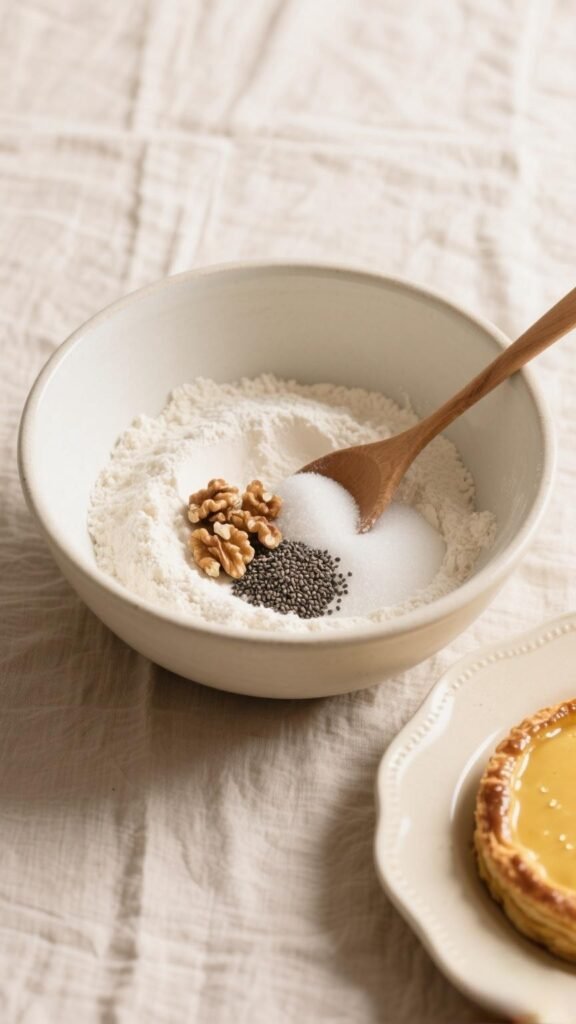
2. Rub in the Butter
Add the chilled, cubed butter to the bowl. Using your fingertips, gently rub the butter into the flour mixture. Lift your hands high as you do this to incorporate air. Continue until the mixture resembles rough, coarse breadcrumbs with no large lumps of butter remaining.
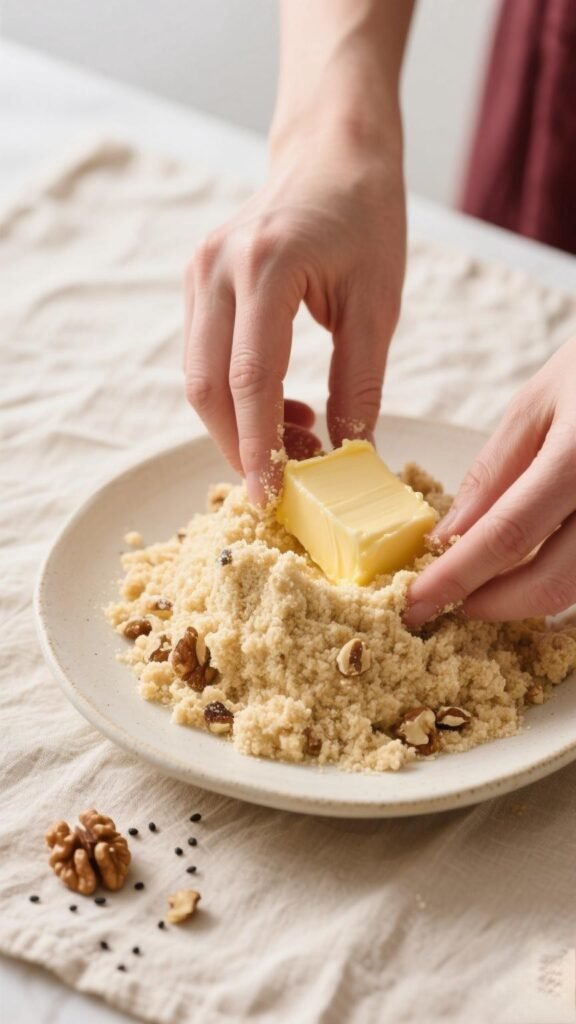
3. Bind with Egg Yolk
Make a well in the centre of the crumbly mixture. Add the large egg yolk.
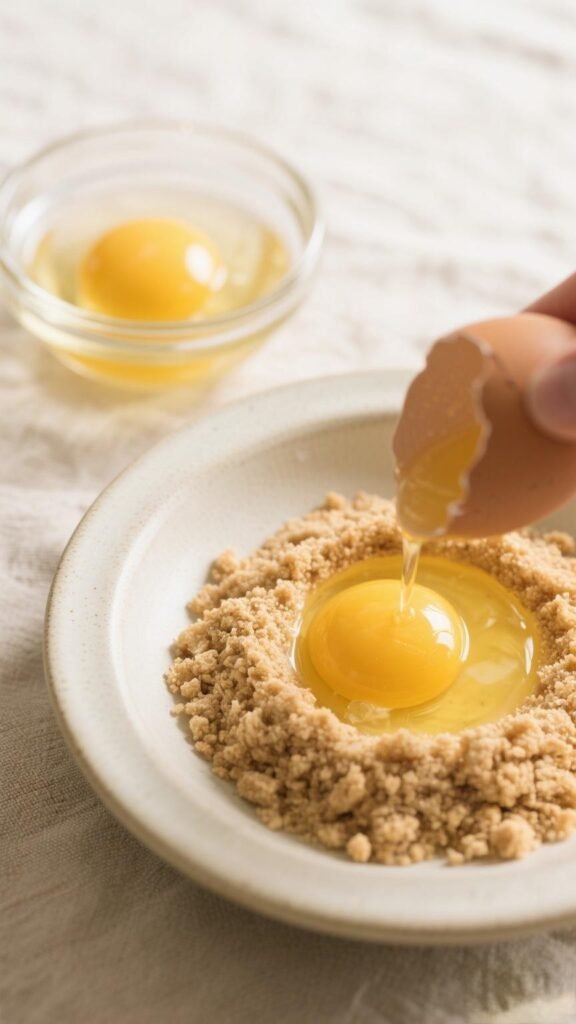
4. Form the Dough
Using a wooden spoon, mix the yolk into the crumbs. Once it starts to come together, use your hands to gently knead and press the mixture into a smooth, soft ball of dough. Be careful not to overwork it.
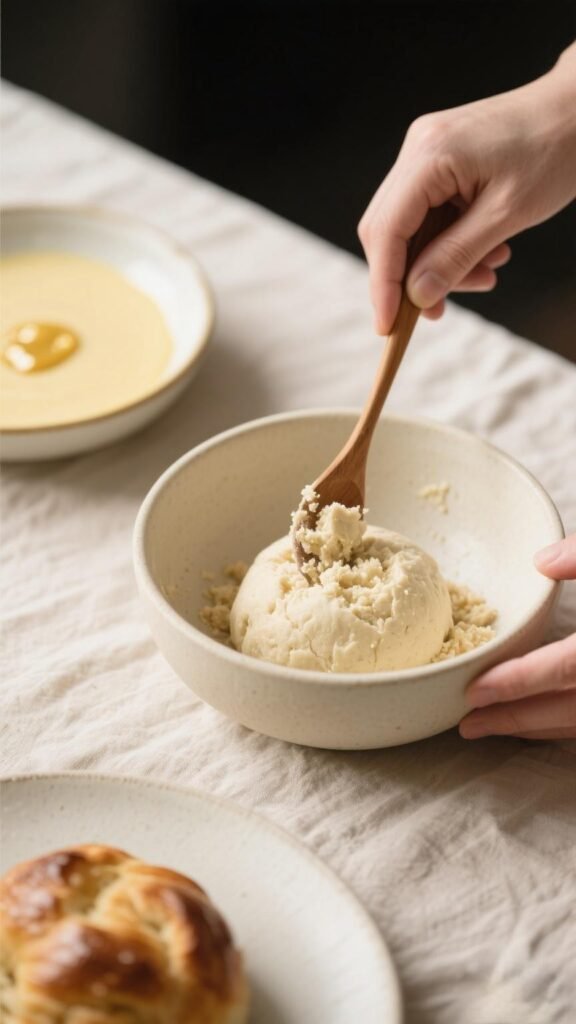
5. Chill the Dough
Place the dough onto a sheet of cling film. Shape it into a thick log, about 5cm (2 inches) in diameter. Wrap it tightly and place it in the refrigerator for at least 30 minutes. This is a crucial step as it firms up the butter, making the biscuits easier to slice and helping them hold their shape in the oven.
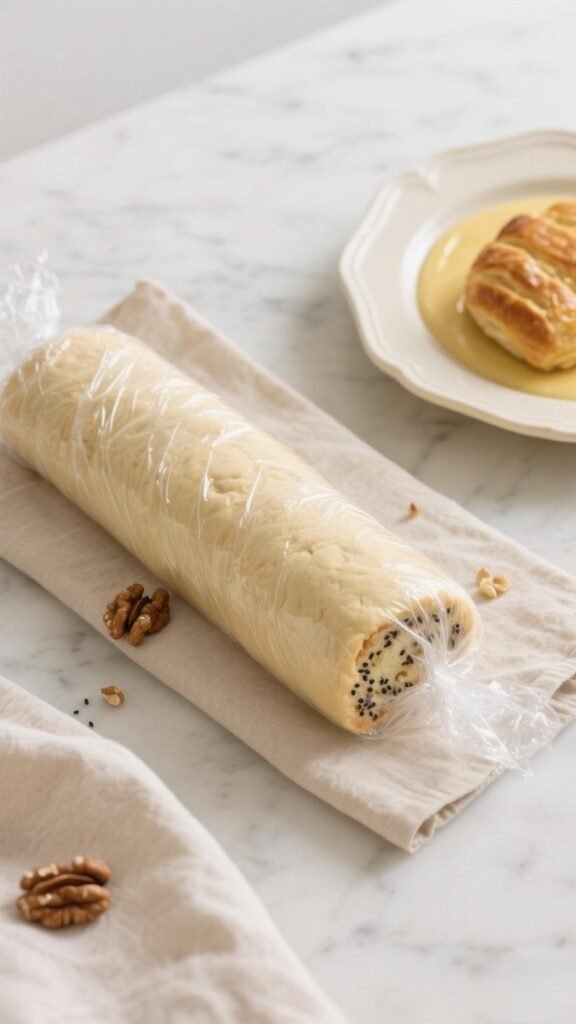
6. Slice into Biscuits
Preheat your oven to 180°C/160°C Fan/350°F/Gas Mark 4. Line two baking trays with parchment paper. Unwrap the chilled dough log. Using a sharp knife, slice it into rounds about 1cm (just under half an inch) thick.
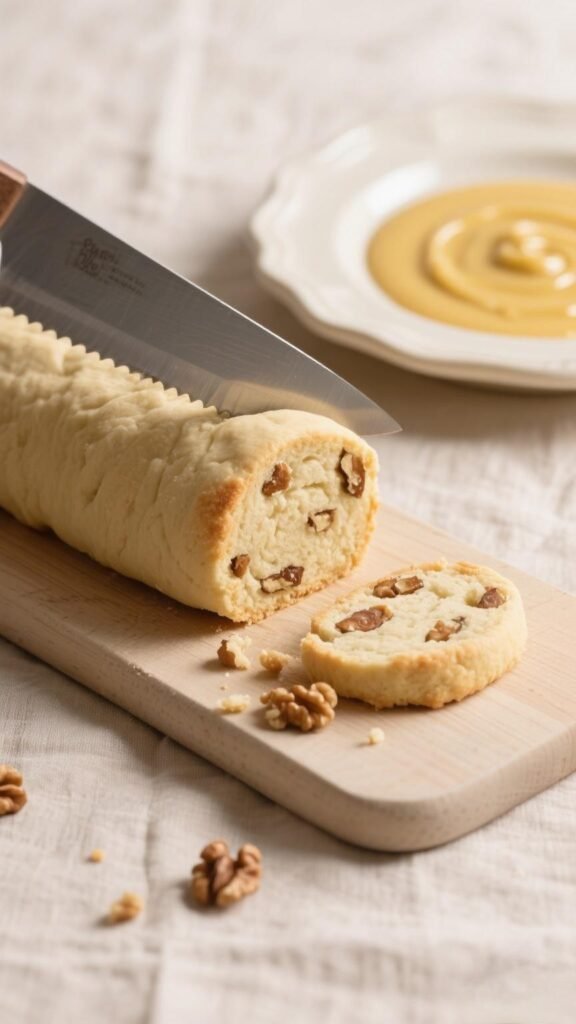
7. Bake to Perfection
Place the biscuit rounds onto the prepared trays, leaving a little space between them as they will spread slightly. Bake for 12-15 minutes, or until they are a very light golden brown around the edges. They will still feel soft in the centre but will firm up as they cool.
8. Cool on a Wire Rack
Remove the trays from the oven. Leave the biscuits on the trays for a few minutes to firm up, then carefully transfer them to a wire rack to cool completely.
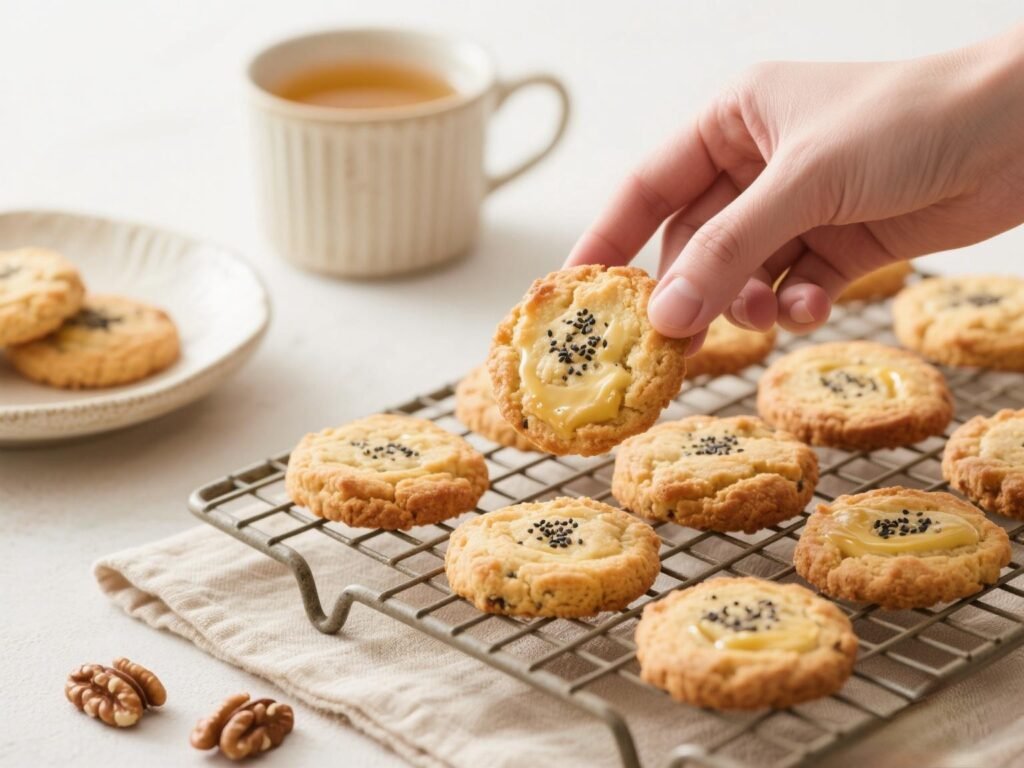
Flavour Profile & Nutritional Information
What to Expect: These biscuits are a masterclass in texture. They are wonderfully short and crumbly, melting in your mouth. The buttery, sweet base is perfectly complemented by the earthy, rich flavour of the walnuts and the subtle, nutty crunch of the poppy seeds. It’s a sophisticated yet comforting combination.
Nutritional Breakdown (Per Biscuit, assumes yield of 24 biscuits):
Source: Calculations are estimates based on data from the USDA FoodData Central database.
- Calories: ~120 kcal
- Fat: ~8g (of which Saturated Fat: ~4g)
- Carbohydrates: ~11g (of which Sugars: ~4g)
- Protein: ~2g
- Fibre: ~0.5g
Tips for the Perfect Biscuit
- Why did my biscuits spread too much? Your butter was likely too warm. Ensure it is cold straight from the fridge, and don’t skip the chilling step for the dough log.
- Why are they tough? You may have overworked the dough when bringing it together. Handle it as little as possible once the egg yolk is added.
- Enhancing Flavour: Toasting the walnuts in a dry pan for a few minutes before chopping them will deepen their flavour immensely.
- Uniform Slices: For perfectly even biscuits, use a piece of dental floss or unflavoured fishing line to slice through the dough log instead of a knife, which can press down.
Vegan Adaptation
This recipe is easily adapted to be plant-based without losing its signature texture.
Vegan Ingredients:
- Replace the 175g salted butter with a high-quality vegan block butter (e.g., Naturli Vegan Block or Flora Plant Butter), chilled.
- Replace the 1 egg yolk with 1 tablespoon of aquafaba (the liquid from a can of chickpeas).
Method:
Follow the exact same method. The vegan butter will rub into the flour in the same way. Use the aquafaba to bind the dough instead of the egg yolk. You may need a tiny splash of plant-based milk if the dough feels too dry, but the aquafaba should be sufficient. Chill and bake as directed.
Recipe Variations & Serving Suggestions
- Lemon Zest: Add the finely grated zest of one lemon to the dough for a citrusy zing.
- Orange & Cranberry: Replace the poppy seeds with dried cranberries and add orange zest.
- Spiced: Add a teaspoon of ground cinnamon or mixed spice to the flour.
These biscuits are perfect on their own but are also excellent served with a cheeseboard, particularly with a sharp Wensleydale or a creamy blue cheese. They are, of course, the ultimate dunking partner for your favourite tea or coffee.
Storage & Reheating Instructions
Storage: Once completely cool, store this biscuits in an airtight container at room temperature. They will keep well for up to approximately 5 days.
Freezing: The uncooked dough log freezes excellently. Wrap it tightly in cling film and foil and freeze for up to 3 months. Thaw in the refrigerator overnight before slicing and baking. You can also freeze the baked biscuits.
Frequently Asked Questions (FAQ)
Can I use a food processor?
Yes, you can. Pulse the flour, sugar, nuts, and seeds together. Add the cold butter and pulse until it looks like breadcrumbs. Then, add the egg yolk and pulse until the dough just begins to clump. Be careful not to over-process.
My dough is too crumbly and won’t come together. What should I do?
This can happen if the butter was very cold or the egg yolk wasn’t quite enough. Add some cold water, one teaspoon at a time, and gently mix until this dough just comes together.
Can I use pre-ground walnuts?
It’s better to chop them yourself. Pre-ground walnuts can be too fine and oily, affecting the texture of the biscuit. You want small pieces for crunch.
Are poppy seeds necessary?
They provide a specific texture and flavour, but you can omit them if you wish. You might want to add a few more chopped walnuts to compensate.
Conclusion & Call to Action
Mary Berry’s Walnut and Poppy Seed Biscuits are a timeless classic for a reason. They are simple enough for a beginner yet impressive enough for any occasion. This recipe delivers on every promise: buttery, crumbly, nutty, and utterly delicious.
We hope you feel inspired to bake a batch. Share your results with us! Tag us on social media or leave a comment below with your baking stories. For more classic bakes, explore our other recipes and Mary Berry herself.



